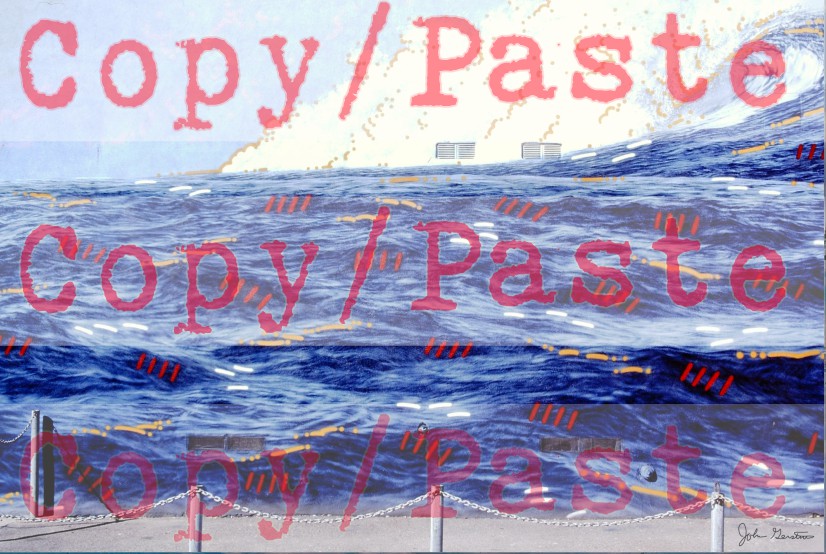
When you’re writing or preparing a presentation and dealing with inanimate objects, the “copy and paste” or “cut and paste” feature can be your best friend.
You can save a huge amount of time by writing over an existing file that includes all the formatting, images and text you need, and then reworking it to fit your current situation.
True, a “copy and paste” or “cut and paste” job has a negative connotation. Purists can view the results as a rushed, lackluster work product.
But who’s to know if you carefully customize the old file?
“Customize” is the operative word here.
If you don’t take the time to tailor your agenda, memo, spreadsheet, PowerPoint or whatever, you can transform yourself from a role model of efficiency into a lazy, low-energy, undependable mortal.
For leaders, that can be a disaster.
Here are three case studies of “copy and paste” gone wrong, with suggestions on how to avoid stepping into these leaders’ careless footsteps.
1. Inaccurate work schedules that inconvenienced staff members, increased a store’s expense, and hurt the manager’s credibility. A new retail store manager’s haste to create the staff’s schedule caused staff members to work longer hours than they wanted to during a holiday week.
What happened? The new store manager copied and pasted a work schedule that his predecessor had created, keeping the store hours the same and just adjusting the days and hours the staff members would work—without paying attention that the new schedule covered New Year’s Eve and New Year’s Day. On New Year’s Eve, the sales associates on duty learned from corporate that stores were closing early. But since the associates had already told a number of customers that their store was closing at the regular time, the store stayed open─to associates’ disappointment and annoyance with their new manager.
2. Rote meetings that consumed time without producing results. A department director reused the agenda he inherited from his former boss for his staff meetings. Each week, he and his 10 team members went around the room reporting on what they were working on with few questions and minimal discussion. The meetings often lasted 90 minutes or more as each individual spoke in great detail about his or her special projects.
What happened? Everyone involved just accepted this meeting format as a huge time suck with no verified value. For several years, the meetings were a habit that no one liked yet no one was willing to challenge the status quo─until a new team member joined the staff and questioned the practice. He shared his experiences of more meaningful meetings and convinced the director to adopt a purpose for the meetings, mix up the agenda, and share responsibilities among staff members for making the meetings engaging and useful. The meetings soon started showing a positive ROI.
3. “Best practices” that didn’t deliver for a different audience. A corporate communication professional learned about a successful campaign that another company in a different industry had used several years ago. She decided to propose that she “lift and shift” it to her organization, which they did.
What happened? The collateral materials featured eye-catching colors on the cover. But the pages inside the cover featured black, dense text—not appealing to the demographics of those receiving the materials for the first time. Plus, the campaign emphasized avoiding risk, while the employees receiving the new pitch for the most part prefer learning about all the possibilities before them. The sign-up rates for the “lift and shift” employee campaign were in low double digits compared to high double digits for the original.
What could these leaders do differently to avoid the downside of copy and paste?
They─and you─can take some or all of these five actions:
- Carve out time to think about what you’re doing on a strategic level, as well as the nuts and bolts of how you’ll get it done. Then use this lens to examine the work you’re recycling and adjust accordingly.
- Ask someone to review your newly, revised work before you release it or present it to make sure it’s clear, accurate and actionable.
- Commit to refreshing your work every couple of years or so, or maybe even more frequently—whether you think you need to or not. You may be so close to what you’re doing that you don’t realize that others are not paying attention, or are stuck in inertia with you. To get a new perspective, go outside your regular circle and ask others for their opinion or help.
- Ditch the concept of “best practices” and instead look for ideas that you can adapt to fit your particular situation. As Shane Snow wrote in the Fast Company article, The Problem with Best Practices, “Best practices don’t make you the best. They make you the average of everyone else who follows them.” This is especially true in our VUCA (volatile, uncertain, complex and ambiguous) world that changes so quickly. What worked two years ago may be obsolete now.
- If you’re a corporate communication professional, join a Communication Strategy Circle starting this April, sponsored by Communitelligence. Circle brings together a maximum of eight peers with two facilitators over a three-month period to take time to think, talk and figure out how to approach real-world issues. In the interest of full disclosure, I’m co-facilitating a Circle on “Getting to AHA!”
How do you make “copy and paste” work for you rather than against you?








0 responses on "The Downside of “Copy & Paste” for Leaders"